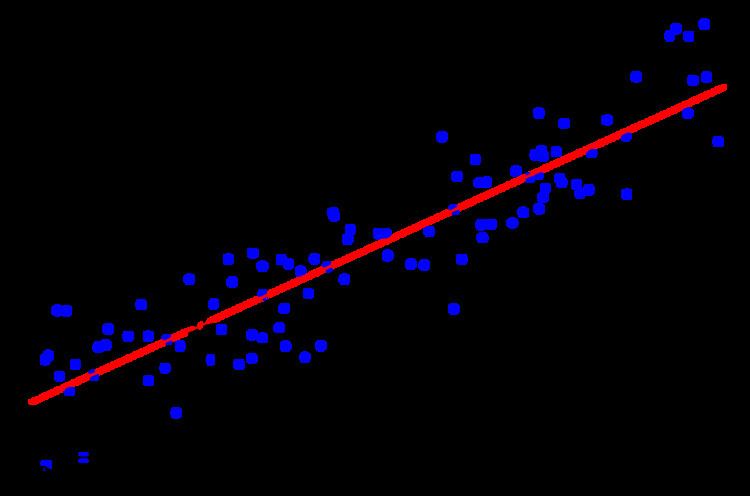 | ||
Partial least squares regression (PLS regression) is a statistical method that bears some relation to principal components regression; instead of finding hyperplanes of maximum variance between the response and independent variables, it finds a linear regression model by projecting the predicted variables and the observable variables to a new space. Because both the X and Y data are projected to new spaces, the PLS family of methods are known as bilinear factor models. Partial least squares Discriminant Analysis (PLS-DA) is a variant used when the Y is categorical.
Contents
PLS is used to find the fundamental relations between two matrices (X and Y), i.e. a latent variable approach to modeling the covariance structures in these two spaces. A PLS model will try to find the multidimensional direction in the X space that explains the maximum multidimensional variance direction in the Y space. PLS regression is particularly suited when the matrix of predictors has more variables than observations, and when there is multicollinearity among X values. By contrast, standard regression will fail in these cases (unless it is regularized).
Partial least squares was introduced by the Swedish statistician Herman Wold, who then developed it with his son, Svante Wold. An alternative term for PLS (and more correct according to Svante Wold) is projection to latent structures, but the term partial least squares is still dominant in many areas. Although the original applications were in the social sciences, PLS regression is today most widely used in chemometrics and related areas. It is also used in bioinformatics, sensometrics, neuroscience and anthropology.
Underlying model
The general underlying model of multivariate PLS is
where
Algorithms
A number of variants of PLS exist for estimating the factor and loading matrices
PLS1
PLS1 is a widely used algorithm appropriate for the vector Y case. It estimates T as an orthonormal matrix. In pseudocode it is expressed below (capital letters are matrices, lower case letters are vectors if they are superscripted and scalars if they are subscripted):
1 function PLS1(This form of the algorithm does not require centering of the input X and Y, as this is performed implicitly by the algorithm. This algorithm features 'deflation' of the matrix X (subtraction of
Extensions
In 2002 a new method was published called orthogonal projections to latent structures (OPLS). In OPLS, continuous variable data is separated into predictive and uncorrelated information. This leads to improved diagnostics, as well as more easily interpreted visualization. However, these changes only improve the interpretability, not the predictivity, of the PLS models. L-PLS extends PLS regression to 3 connected data blocks. Similarly, OPLS-DA (Discriminant Analysis) may be applied when working with discrete variables, as in classification and biomarker studies.
In 2015 partial least squares was related to a procedure called the three-pass regression filter (3PRF). Supposing the number of observations and variables are large, the 3PRF (and hence PLS) is asymptotically normal for the "best" forecast implied by a linear latent factor model. In stock market data, PLS has been shown to provide accurate out-of-sample forecasts of returns and cash-flow growth.
Software implementation
Most major statistical software packages offer PLS regression.. PLS regression is implemented in SAS via the PLS procedure. The 'pls' package in R provides a range of algorithms.
